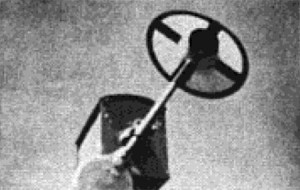
"Jack Pashkovsky must love the iron horse to muster the patience to gather the many scenes of the rails. A young girl (perhaps his daughter), bag in hand, boards the train for a distant trip to lend continuity. We see the train(s) at the station, in the hills, fields, valleys, desert, tunnels, bridges-just about every place where a train can be seen. The audience is permitted to view the panorama from high and low places, atop the train, and from the cab. A study of trains in motion which holds interest throughout" PSA Journal, Nov. 1958, 48.

"Documentary: On peasant farm life in Korea, the rice crop and family labor." National Archives.
"'Rice,' a three reel subject in the educational class entered by F. C. Ells of Yokohama, Japan, demonstrated a fine appreciation of production and photographic values as well as how to combine it so as to make entertainment. Many were of the opinion that this picture, if it were in 35mm, would be worthy of professional theatre presentation." American Cinematographer, Dec. 1933, 321.
"Rice and Farmer depicts the life and toil of the Japanese who raise rice for a living. Ueda, who made the film, has a keen eye for composition. Few filmers today pause long enough to look for a pleasing view through the lens before pressing the trigger, but this is one of Ueda's strong points, and his film is a joy to see for this one aspect alone" PSA Journal, Aug. 1967, 37.
"Rice Harvest in Japan by James and Veda Linford, PSA members of Oakland, Calif. The Linfords have presented another pirze film to go along with their former winners. This 8-minute 16mm film was awarded a Ten Best Medal" PSA Journal, Nov. 1971, 41
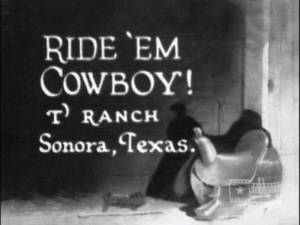
"Produced by Edwin S. Mayer, this 1929 amateur film documents life and work on the T-Half Circle Ranch near Sonora. Ranch hands first herd cattle for branding and de-horning. Then, they turn to working the sheep, sorting them into separate classes before shearing wool. Later, the ranch hands battle a prairie fire on the property. In addition to outlining ranch operations, Mayer also introduces his family and colleagues. At the conclusion, Edwin and his wife Minnie join another couple to explore Carlsbad Cavern in New Mexico. The cave is now the primary attraction of Carlsbad Caverns National Park. Please note, this film contains a racist joke regarding African Americans. The Texas Archive of the Moving Image does not condone this language, but presents the film as it was originally created, because to do otherwise would be the same as to claim this discrimination never existed" Texas Archive of the Moving Image.
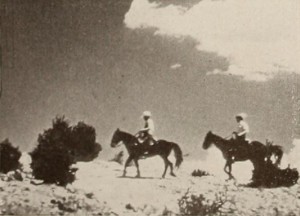
"Riders of the Pecos is a movie of a "dude ranch" with all the close shots of interesting and significant details that usually are missing in "dude ranch" films. During a summer vacation, few take the time and effort to make as human and colorful a document as has E. M. Barnard. He has caught the dust of the corral, the appetites of the open and even the barn dance. It is a horsy film, of course, with sequences of roping, "bronco busting" and plain and fancy riding. But best of all are the charming shots of a horseback trip and the campfire at the trail's end. There is a neatly turned "running gag" of a young equestrienne who is first seen repeatedly as more concerned with her brightly polished boots than with riding. But, after a few suppers off the mantel, she adds more dust and scars to her boots than got there naturally and becomes a real cowgirl." Movie Makers, Dec. 1941, 567.
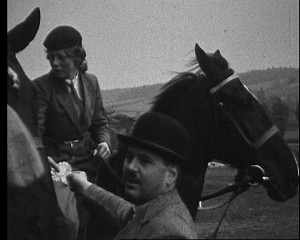
"Footage from the Princes Risborough Show, including riding variants on ‘school sports day’ contests, riding variant of musical chairs, and an inter-hunt giant ball pushing contest" (EAFA Database).
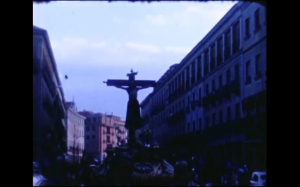
Documental sobre la Semana Santa en una ciudad de Castilla, donde la paz contrasta con la violencia de otras partes del mundo.
Documentary about the Holy Week in a city of Castilla, where peace contrasts with the violence lived in other parts of the world.
"Recreates the revival of change-ringing of the bells at Vancouver's Holy Rosary Cathedral, after a five-year hiatus. Shows the training of bell-ringers and the ringing-in of the New Year. The bells of Westminster Abbey in Mission City are also heard. Members of the Vancouver Society of Change Ringers are featured. Winner of a Canadian Film Award in the amateur category (1961)" British Columbia Archives.
Total Pages: 79